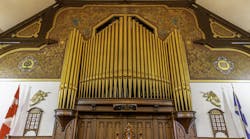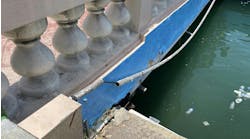Article 650 of the 2017 National Electrical Code (NEC) provides the requirements for pipe organs. The Article defines a pipe organ as “A musical instrument that produces sound by driving pressurized air (called wind) through pipes selected via a keyboard [Sec. 650.2].
This isn’t a long Article, but some key points from it are:
- Use a double-insulated DC power supply or bond the DC power supply to the input grounding conductor [Sec. 650.5].
- Conductors must be at least 28 AWG for electronic signal circuits, at least 26 AWG for the electromagnetic valve supply, and at least 14 AWG for a main common-run conductor in the electromagnetic supply [Sec. 650.6(A)].
- Conductors other than the common-return conductors and those inside the organ must be cabled [Sec. 650.6(B)].
- Cables must be securely fastened in place. You can attach them directly to the organ structure without insulating supports; same goes for control equipment and bus bars connecting common-return conductors [Sec. 650.6].
- Splices don’t have to be enclosed in boxes or other enclosures [Sec. 650.6].
- The wiring of the sounding apparatus must be within the organ chamber [Sec. 650.9].




